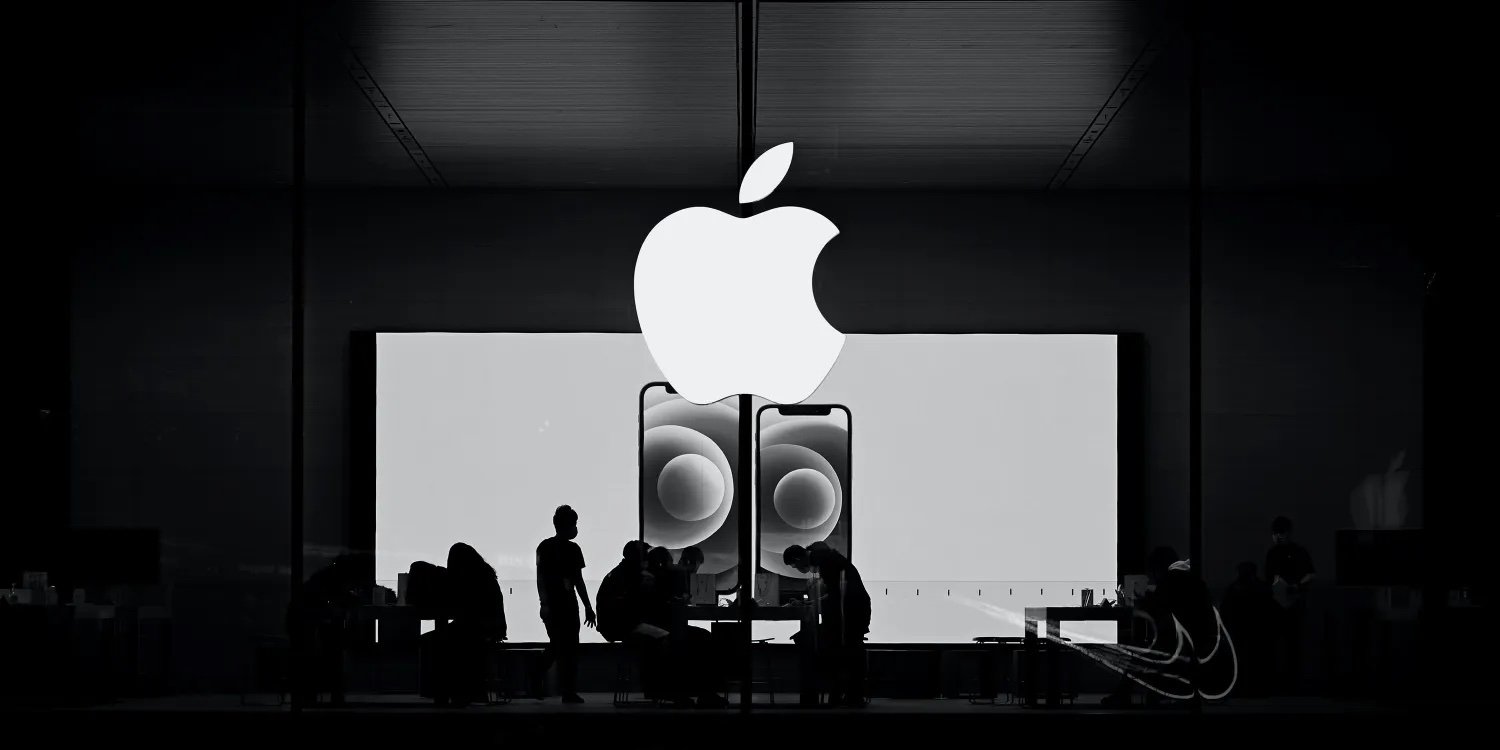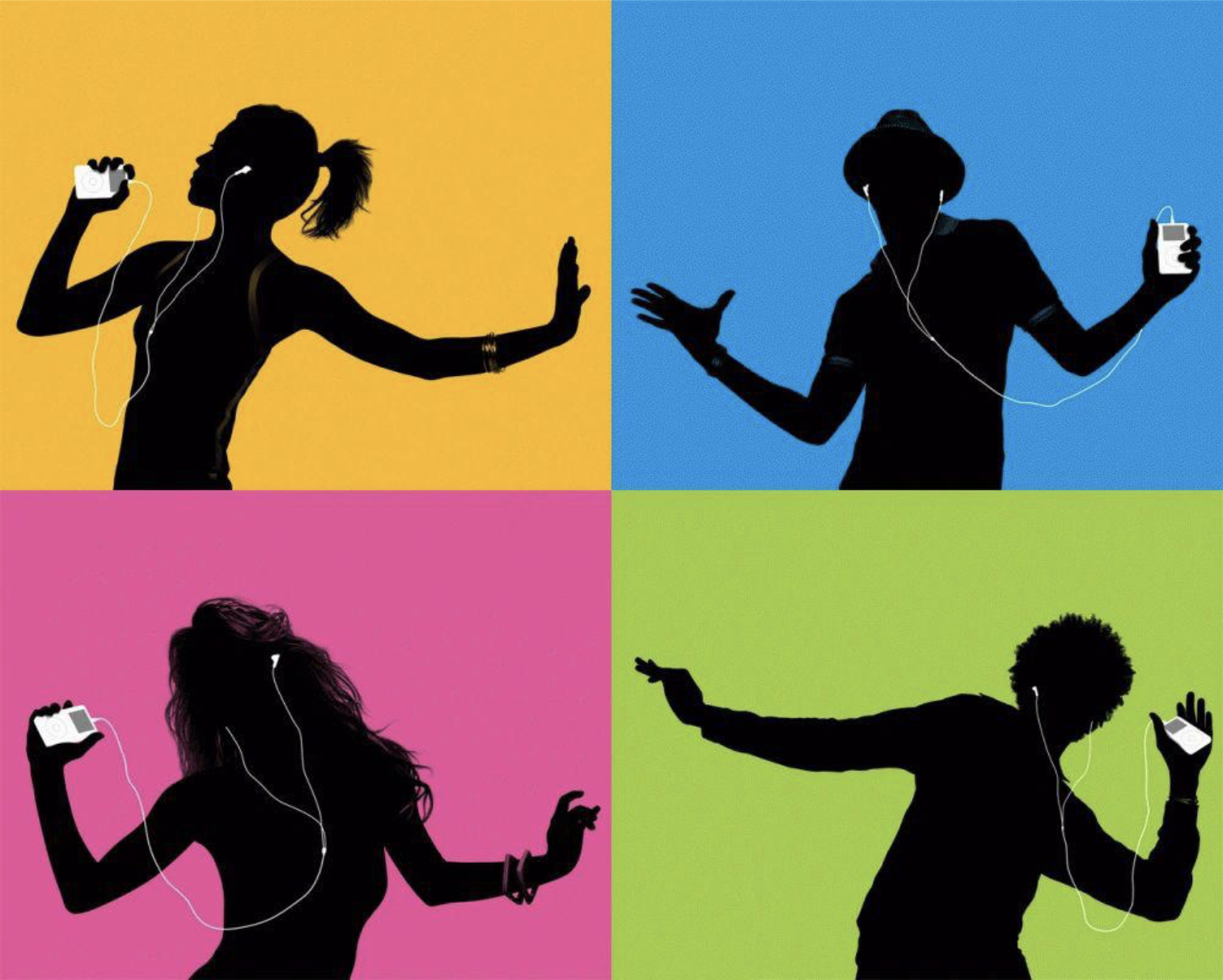Uncovering Apple's Advertising Magic
Image Courtesy: 9to5Mac
Even among the American tech giants, Apple stands as a beacon of innovation and design. Behind the sleek design and cutting-edge software lies a carefully crafted advertising strategy that plays a pivotal role in shaping the company’s image and success. Let’s dive into the intricacies of Apple’s advertising strategies and explore the campaigns that have left an indelible mark on the minds of consumers worldwide.
Simplicity is Key
At the core of Apple’s advertising strategy is simplicity. Spanning from product design to marketing endeavors, Apple consistently champions minimalist design. A notable chapter in their advertising legacy unfolded between 2003 to 2005 with the iPod silhouette campaign, which epitomized the brand’s commitment to clean yet crafted design. The iconic campaign featured vibrant silhouettes set against solid-color backdrops, portraying individuals dancing with white earbuds connected to their iPods.
Image Courtesy: Apple
The campaign’s objective was clear: listening to music through an iPod was more than a mere auditory experience—it was a dynamic, immersive journey that could elevate ordinary moments. Each advertisement of this campaign strategically incorporated a popular song, showcasing the iPod’s versatility in catering to diverse musical tastes. The combination of visual impact and catchy music resonated with consumers, making the campaign highly memorable. Concluding each advertisement with the simple tagline “Life is Random,” Apple underscored the spontaneity and personalization the iPod brought to music consumption.
Storytelling
Apple masters the art of storytelling in its advertisements. On January 22, 1984, Apple introduced the Macintosh computer in a commercial during the Super Bowl. The opening scenes depicted a dystopian world filled with identical, expressionless individuals, a stark representation of a society subdued by uniformity. A looming figure on the auditorium’s screen sought to maintain control and enforce compliance.
In a cinematic twist, a young woman dressed in vibrant colors burst into the auditorium, challenging the established order. Approaching the authoritative figure, she shattered the screen, and in that transformative moment, light flooded the scene. This powerful visual metaphor symbolized the Macintosh computer’s capacity to disrupt the norm, fostering creativity and independence.
Image Courtesy: Apple
This commercial marked a paradigm shift from traditional, product-centric advertisements to narratives that aimed at inspiring cultural change. By showcasing the Macintosh not as a mere device but as a catalyst for individual empowerment, Apple set the stage for a new era in advertising. Beyond its immediate impact, this commercial exemplified Apple’s commitment to challenging the status quo and establishing an emotional connection with viewers. It laid the foundation for future campaigns, solidifying Apple’s reputation not only as a technological innovator but also as a cultural provocateur.
Emotional Appeal
From 2006 to 2009, Apple’s “Get a Mac” campaign used humor to captivate audiences. The campaign featured two characters personifying a Mac computer and a PC, engaging in conversations that showcased the benefits of using a Mac over a PC. The comedic charm of the ads emanated from the clever personification of the two computers and the exaggerated disparities in their personalities and characteristics. The Mac emerged as the cool, reliable, and user-friendly hero, while the PC struggled with technical glitches and lagged behind the Mac’s capabilities.
Image Courtesy: Apple
Because of the commercial’s comedic effect, Apple not only effectively communicated the Mac’s key selling points but also created an emotional, memorable connection with the audience. Humor in advertisements and other forms of emotional appeal transcends barriers and resonates with the audience. The “Get a Mac” campaign didn’t only make viewers think about the product; it made viewers smile, and in doing so, it etched Apple’s message into the hearts and minds of consumers.
Use of Well-Known Figures
Apple has seamlessly woven celebrities and influential figures into its narrative fabric, such as in 1997 with the launch of the “Think Different” campaign. This campaign not only marked a pivotal resurgence for Apple but also underscored the transformative vision of Steve Jobs, who had returned after a period of absence. Each commercial in this campaign featured a black-and-white photograph of a luminary accompanied by the powerful mantra, “Think Different.” The narration said:
“Here’s to the crazy ones. The misfits. The rebels. The troublemakers. The round pegs in the square holes. The ones who see things differently. They’re not fond of rules. And they have no respect for the status quo. You can quote them, disagree with them, glorify or vilify them. About the only thing you can’t do is ignore them. Because they change things. They push the human race forward. And while some may see them as the crazy ones, we see genius. Because the people who are crazy enough to think they can change the world, are the ones who do.”
Image Courtesy: Apple
These words were echoed through the lens of iconic figures, including Albert Einstein, Martin Luther King Jr., Mahatma Gandhi, and Amelia Earhart. This eclectic assembly of visionaries reinforced a powerful message: thinking differently is the catalyst for groundbreaking contributions and transformative change across diverse domains. Beyond mere marketing, it became a cultural touchstone, symbolizing Apple’s ethos and resonating with a generation that aspired to change the world with inspirational characters and figures.
Product-Centric Campaigns
In certain campaigns, Apple’s advertising puts its products at the forefront. The “Shot on iPhone” campaign, for instance, showcased the impressive capabilities of iPhone cameras by featuring stunning photographs taken by users. These visuals cover a wide range of subjects, from landscapes and portraits to action shots and close-ups. The campaign’s reliance on user-generated content adds authenticity and relatability, as it showcases what everyday users can achieve with their iPhones. By allowing customers to become part of the narrative, Apple not only highlighted the quality of its products but also fostered a sense of community among users.
Image Courtesy: Apple
Apple’s advertising strategies have played a pivotal role in propelling the company to the forefront of the American tech agents. By embracing simplicity, weaving compelling narratives, maintaining consistency, and leveraging innovative campaigns, Apple has successfully created a brand that goes beyond products. It represents a lifestyle, a standard of excellence, and a commitment to pushing the limits of technology. As we look ahead, it will be fascinating to see how Apple continues to innovate in both its products and the way it communicates with its global audience.
Samantha Genzer







